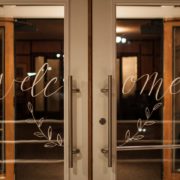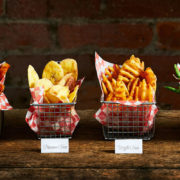There is such a thing as a free lunch: Why the Fortune 500 use food services to engage their employees
We’ve all heard the anecdotes out of Silicon Valley—an uber-progressive tech start-up showers its employees with benefits from desk-side massages and unlimited vacation, to free gym memberships and complimentary concierge service to run errands for busy employees. Indeed, these perks—which often include free lunch—are now almost a workplace expectation in some industries, and not just the tech sector.
Credit the likes of Google, Apple and Facebook for raising the bar and taking the employee experience to another level altogether. And nowhere is that more apparent than in their awesome employee meal programs.
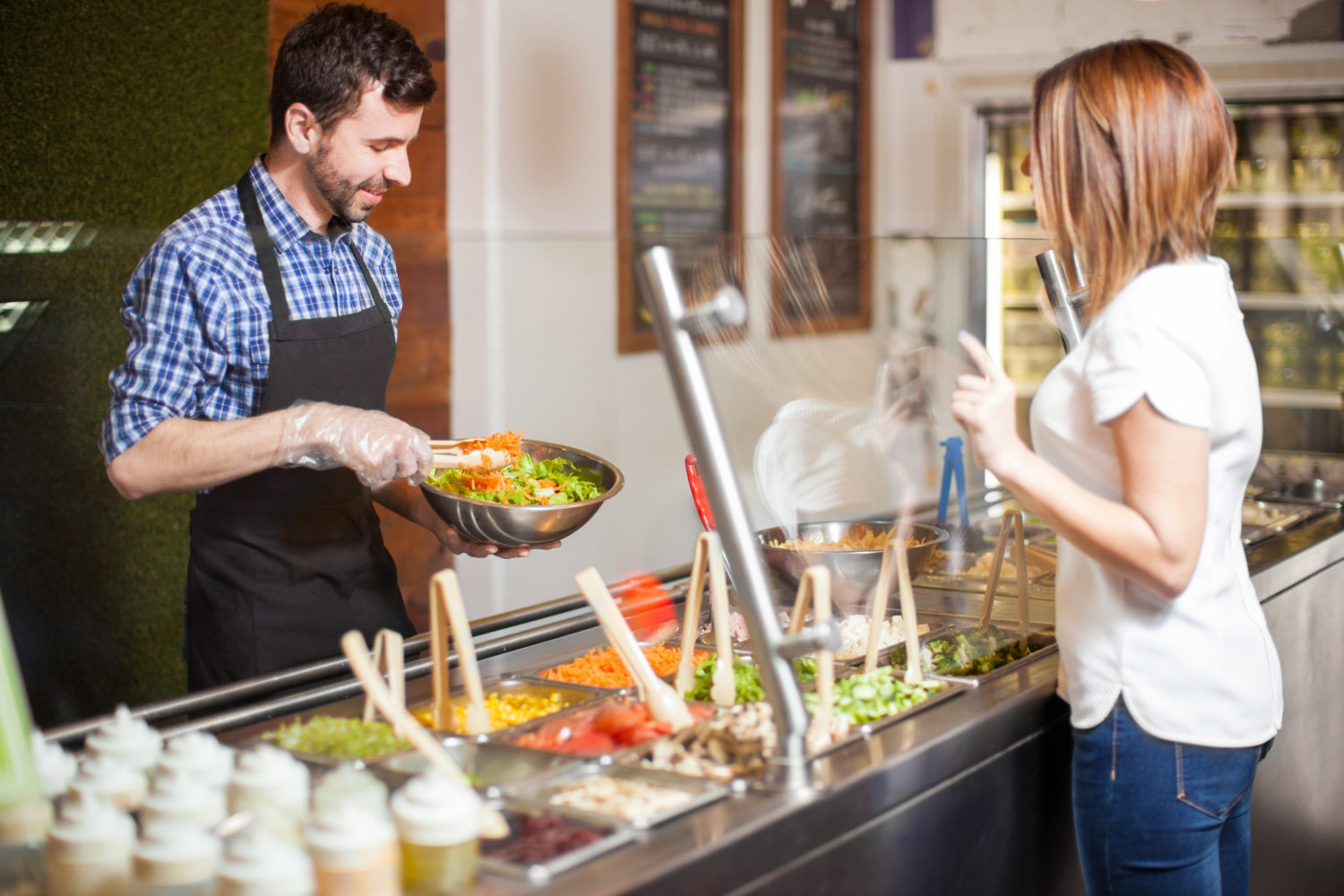
Take Google. The online search giant not only offers free lunch, according to Forbes the company has more than 30 cafes at its Mountain View, CA, headquarters. The offerings range from traditional American fare and Indian favourites, to food trucks and fresh fruit smoothies. By all accounts, the food is really good, too! Other companies such as Facebook offer similarly diverse meal options, while others take it a step further.
At its new spaceship-like headquarters in Cupertino, CA, Apple has incorporated several staff cafeterias that feature four-storey windows in an atrium setting. Best of all, they’re trying to grow as much produce on-site at their campus as possible—a task made much easier due to California’s optimal climate. It’s a cool idea that demonstrates their commitment to serving employees fresh, healthy food.
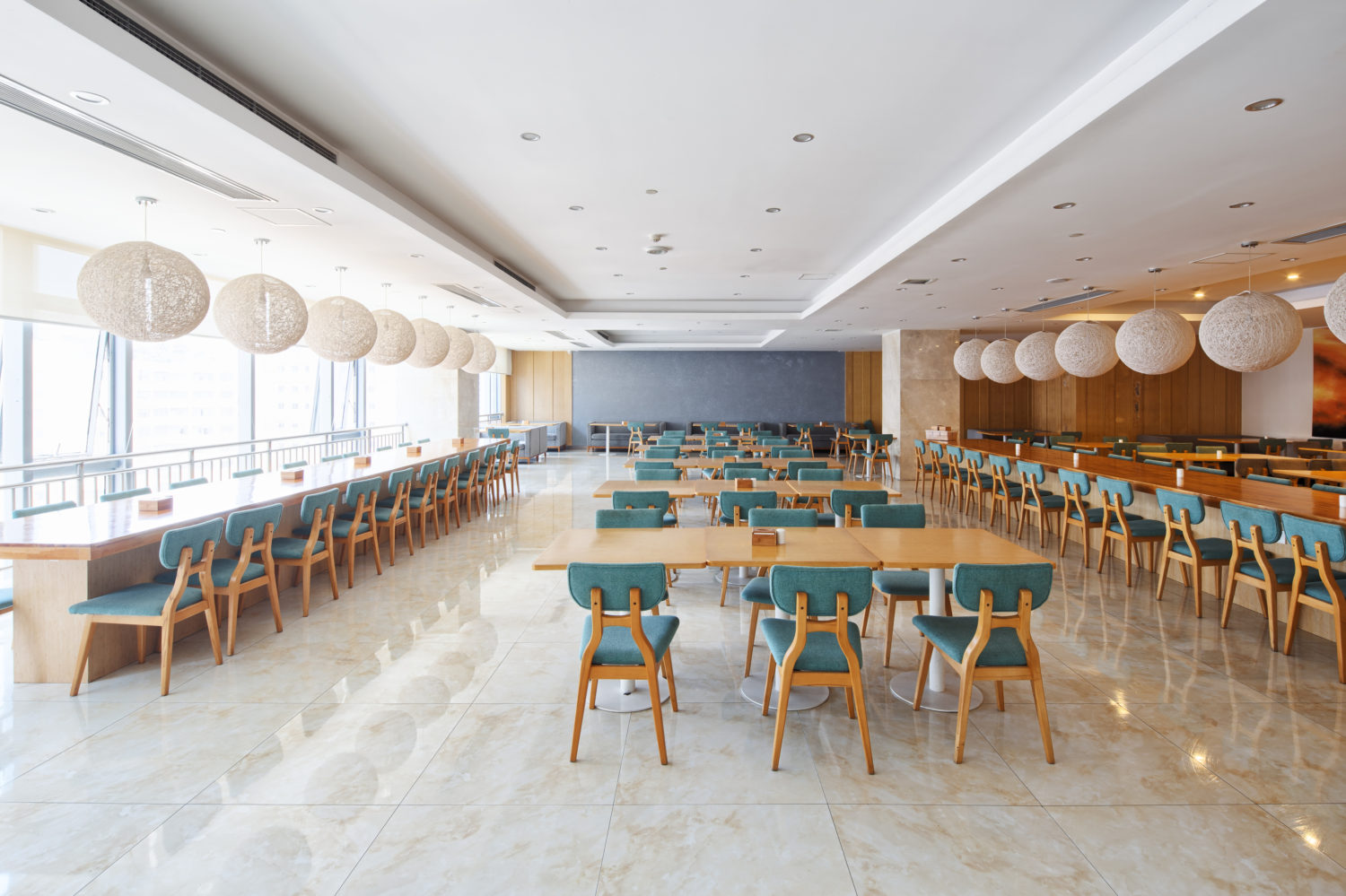
Now, you may be wondering: Why bother providing meals for employees (let alone growing the food that goes in them) when it’s their job to brown-bag it or pay for lunch themselves? It’s a good question. To be clear, we’re not saying that companies necessarily have to cater free luncheons every day or even every week—although those that do, can easily earn back their return on investment.
In many cases, developing a creative corporate lunch program is about setting the stage for interaction and the exchange of ideas—not to mention allowing co-workers to simply enjoy time together.
Having catered thousands of corporate luncheons over the years, we’d argue that offering your employees great food—whether paid, or by simply offering a great menu of meal options at your cafeteria—is about much more than providing a friendly perk (although that’s definitely part of the equation). That’s especially true at a time when employees’ work and home lives have become increasingly blurred, with workers spending more time than ever in the workplace. It’s a reality: many of us spend more time with our co-workers than our families.

When done right, mealtime can create a unique opportunity for staff to build stronger team bonds, share ideas or simply take a break from the daily grind. Like when families make a point to eat dinner together, breaking bread as a team can be a key aspect of building trust amongst employees and building a stronger culture. It also fosters enhanced employee engagement and even productivity.
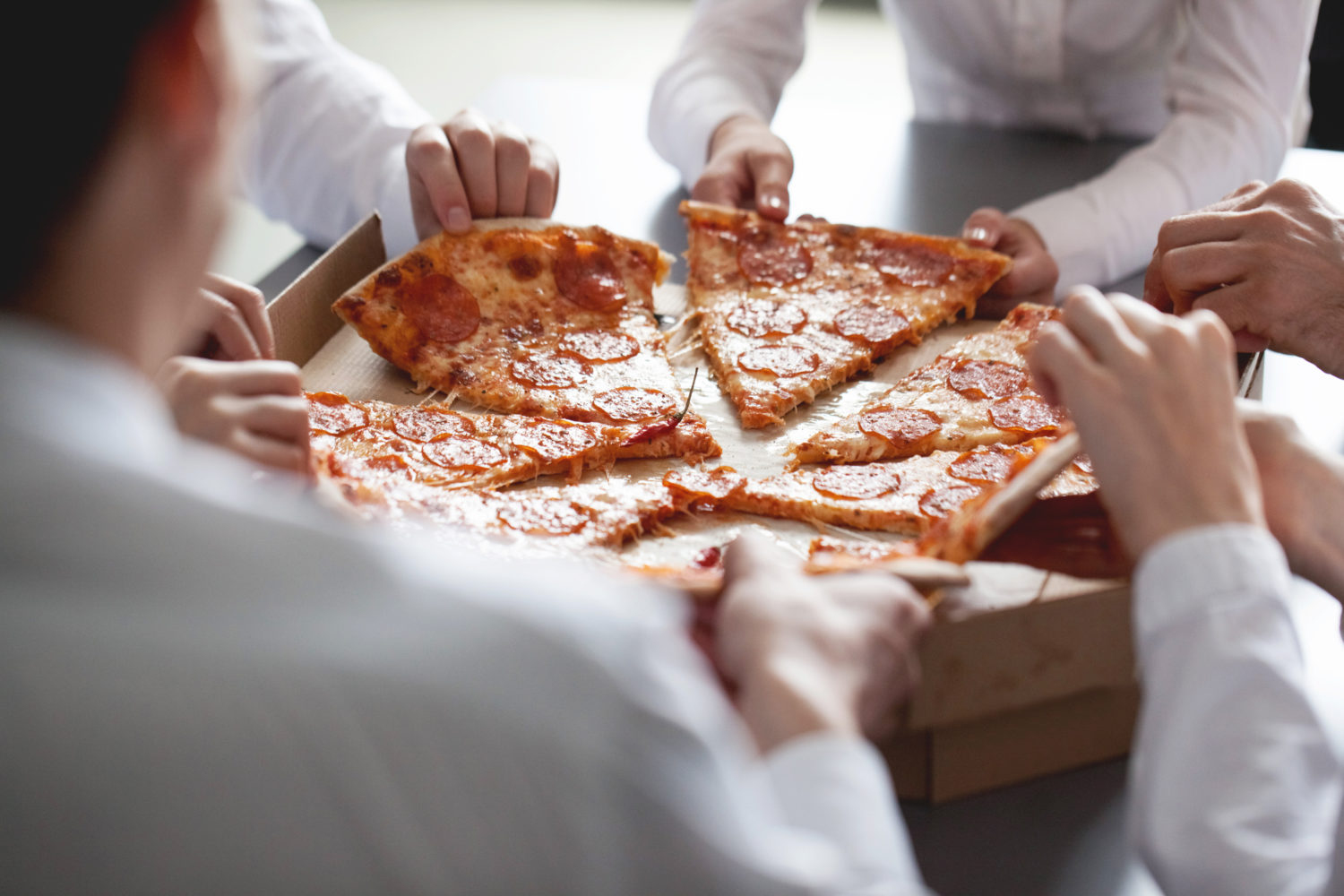
Back in 2015, Google launched its own study to find out what made its various teams successful. They figured the answer would have to do with stacking their departments with super-smart PhDs and other talent that smaller companies couldn’t afford. They were wrong.
According to a Google blog on the study, their research highlighted five ‘key dynamics that set successful teams apart from other teams at Google:
Psychological safety: Can we take risks on this team without feeling insecure or embarrassed?
Dependability: Can we count on each other to do high quality work on time?
Structure & clarity: Are goals, roles, and execution plans on our team clear?
Meaning of work: Are we working on something that is personally important for each of us?
Impact of work: Do we fundamentally believe that the work we’re doing matters’
Most of those dynamics have to do with fostering collaboration, communication and mutual trust. Those aren’t skills that are necessarily developed in a boardroom. A great deal of the time they’re developed in social settings, when employees have the chance to interact in unexpected or spontaneous ways. That often happens while sharing a meal or a latte.
OK, so right now you’re scratching your head wondering how you can keep up with the likes of Google and Apple. Even if yours is a larger corporation, you may not have the budget to offer a comparable package of perks. But even if you decide to foot the catering bill, a free lunch needn’t break the bank. With a little creativity and planning, you can make it work for your workplace. How?
First, understand what kind of catered luncheon would make sense for your workplace culture—that may involve a much deeper investigation of what makes your culture tick, but let’s assume you’ve already done that introspective heavy lifting.
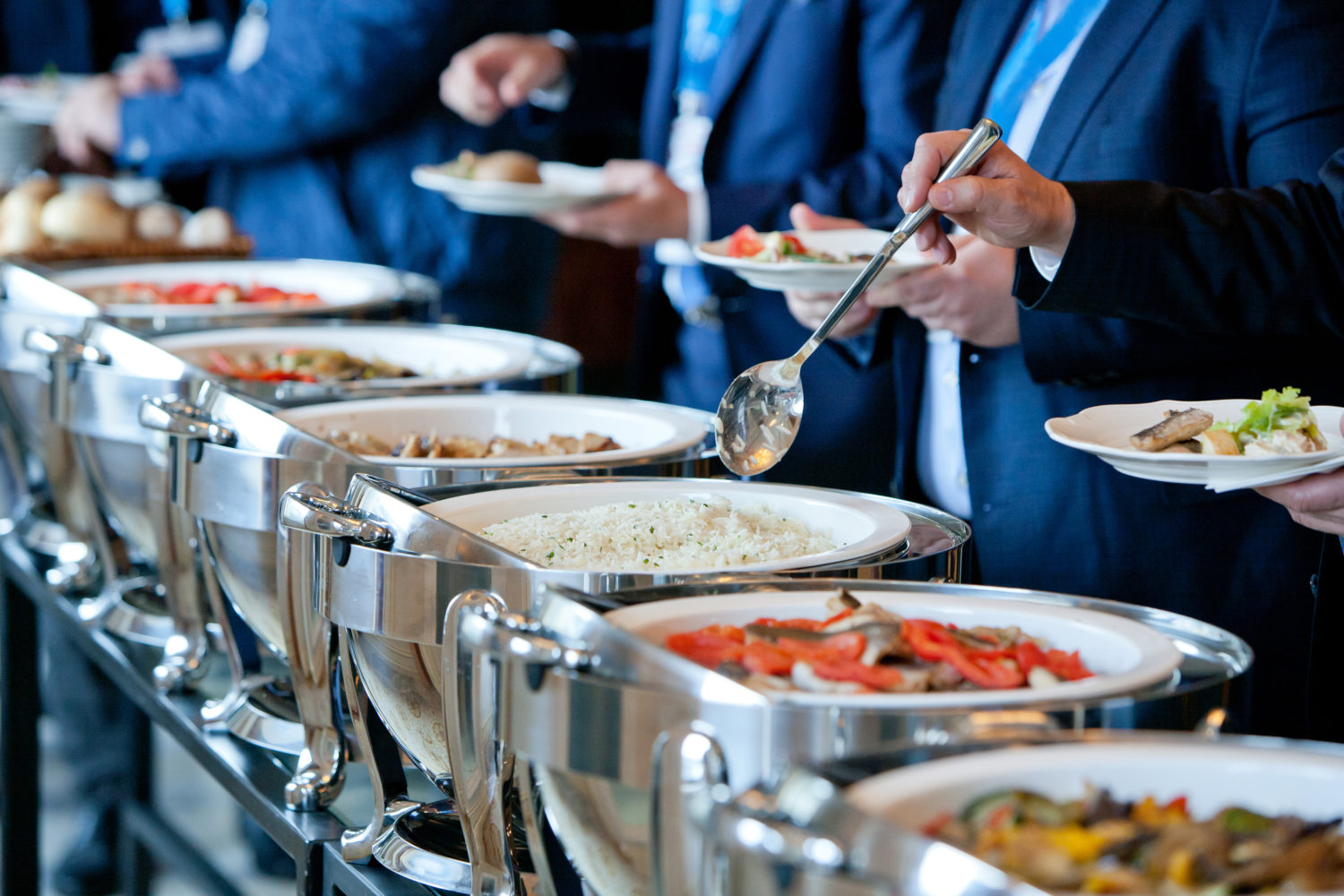
For example, if you have a younger workforce, they might get excited by the prospect of a different food truck pulling up outside your office once a week. If yours is a more buttoned-down office environment, your employees may prefer a traditional buffet spread. The best advice we can give is to customize your menu to suit your workers’ tastes and the workplace environment you want to nurture.
Next, work with a reputable caterer experienced at serving groups in a hurry (most employees don’t have more than 45 or 60 minutes for lunch)—and understand their comfort level when it comes to serving a workforce the size of yours. At Kiss the Cook Catering, for example, we’ve worked with companies ranging from 10 to 2,000 people, all with varying budgets. Be aware that not all caterers are willing or able to provide differing levels of service.
Once you pick the right caterer, set a budget that makes your meal program sustainable. Let’s face it: there’s nothing worse than unveiling to employees a cool new initiative, only to have it shut down a few months later because it was too expensive to maintain.
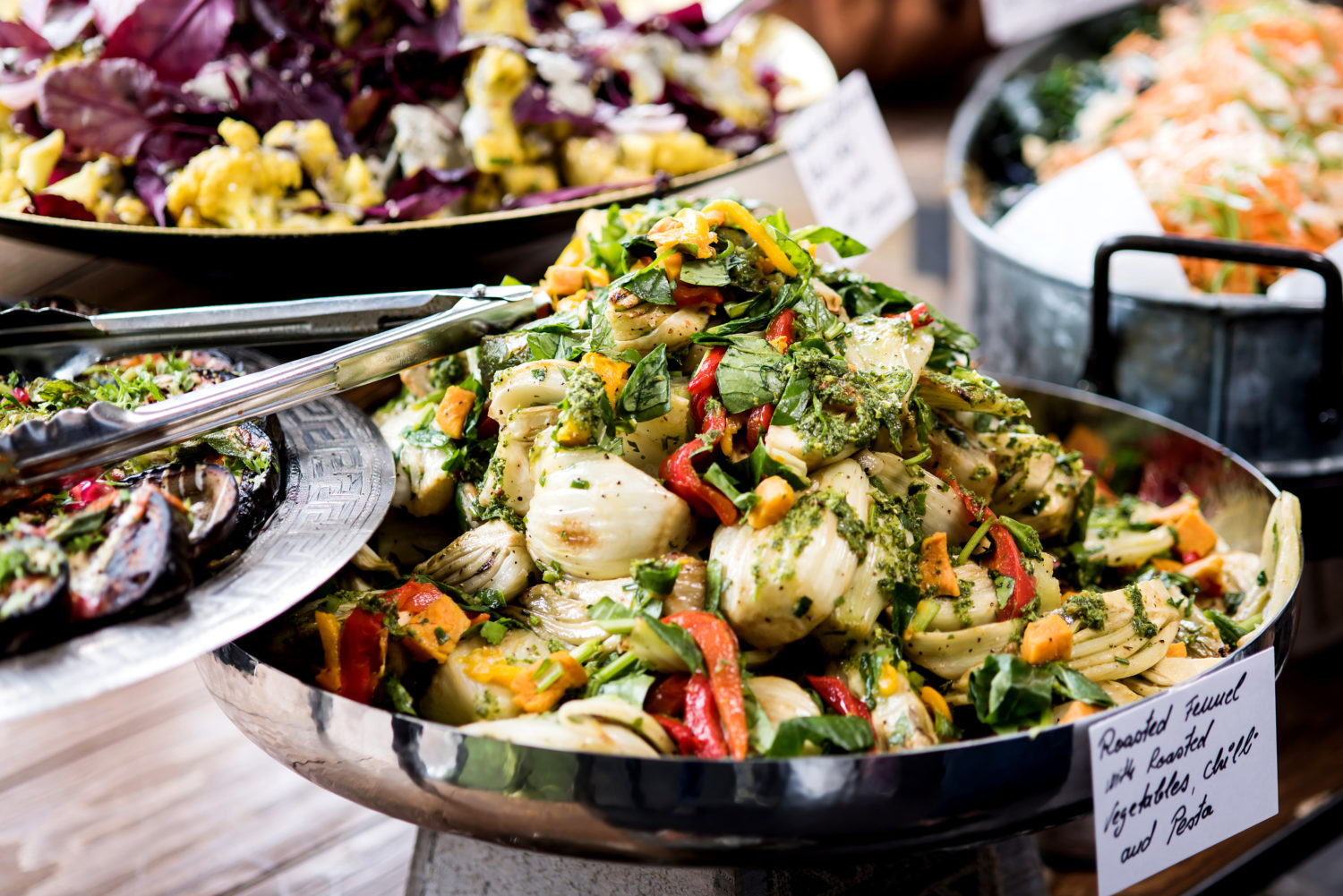
If you decide to cover the cost of your luncheon, the amount per employee doesn’t have to be huge—you can serve a great meal for as little as $10 per person. Alternatively, some organizations will charge their employees for some or all the cost of a lunch. Here at Kiss the Cook Catering, we have experience working with various meal-subsidy models, which tend to be customized to each workplace’s unique budget. Worried that some employees might balk when asked to pay for part of their lunch? Remember that most people will gladly pay to eat a budget-friendly, nutritious meal in-house for the sake of convenience alone.
Just be creative and make your meal time fun and engaging. Depending on budgets, that could mean working with your caterer to incorporate revolving food stations. In our case, that might include our awesome poutine or made-to-order pasta bars. Maybe it means creating a theme around a seasonal event or company milestone. Perhaps it involves tying employee health and wellness goals together with your catering program (we often work with companies that have lunchtime walking clubs or employee weight-loss programs, for example, and want a menu that’s as healthy and nutritious as possible)
Whatever the case, it’s about overcoming negative impressions that cafeteria food will eventually become boring or of a poorer quality. Whether we’re catering individual lunches or running a cafeteria, we focus on providing restaurant quality food. In fact, we specialize in improving cafeteria fare by cooking meals that are fresh and exciting, so your employees will want to eat the food you’re serving them!

Last point: make it a rule that your employees must eat together rather than setting up a buffet in the boardroom and having them return to their desks to chow down. According to a study released last year by Dalhousie University, 40 per cent of Canadians eat at their work stations. About 24 per cent prefer to eat in a cafeteria or on-site kitchen. Most of them will spend that time eating alone, scanning articles or social media on their smart phones. Have your employees ditch their phones for an hour and chat—not only about work, but about issues of importance to their lives.
That’s where the magic happens. Progressive companies can use their catering programs to help attract and retain top talent, create a platform for improved innovation and even drive bottom-line performance. Take it from the most successful companies in the world: keeping employees healthy, happy and (most importantly) full, can be one of the key differentiators that take your workplace culture to the next level.
Let’s connect and see how we can work with you to customize an unforgettable, employee-friendly lunch program in 2018.
Fia Pagnello



